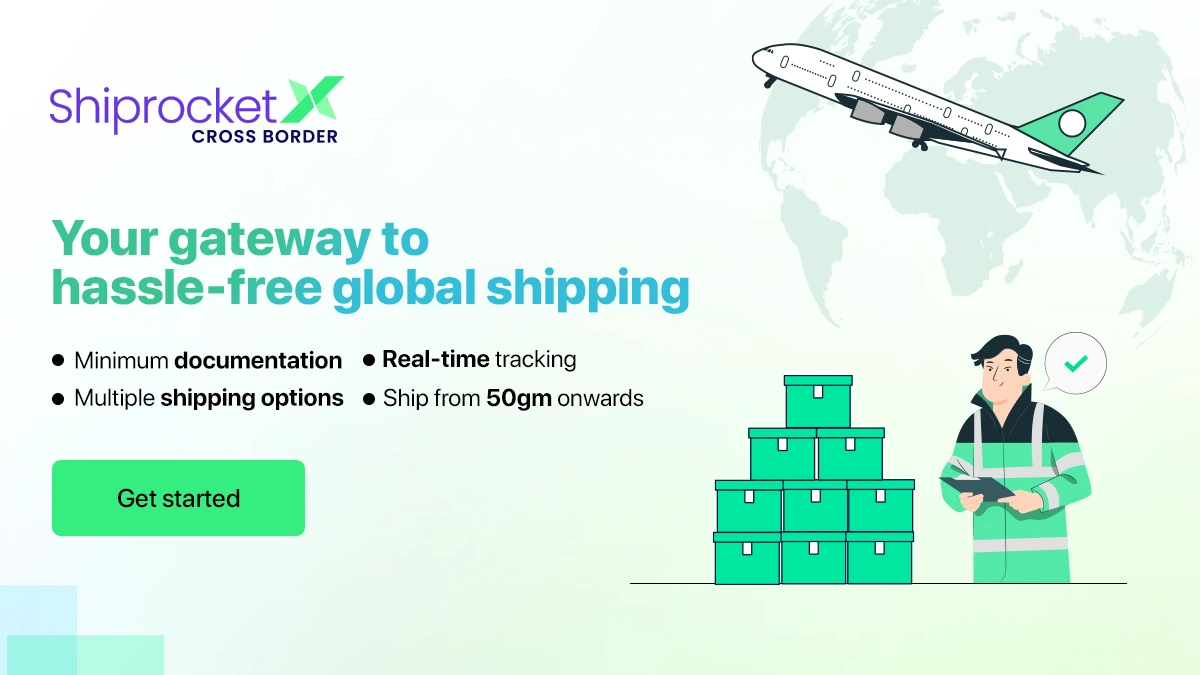Top eCommerce Trends 2025: How International Shipping is Evolving
- The Global Shift: eCommerce Trends Reshaping International Shipping
- 1. Expansion of Cross-Border eCommerce Logistics
- 2. Streamlined Customs and Compliance
- 3. Sustainable and Green Shipping Solutions
- 4. AI and Automation: Powering the Future of Shipping
- 5. The Rise of Localized Fulfillment Centers
- 6. Flexible Delivery Options for Global Customers
- 7. Direct-to-Consumer (D2C) Expansion Across Borders
- 8. The Post-Purchase Experience Revolution
- Conclusion
In 2025, eCommerce trends are transforming the international shipping industry. With AI-driven supply chains, sustainable packaging, and localized fulfillment networks, global sellers are scaling faster and smarter. Businesses embracing automation, flexible delivery options, and eco-friendly practices are positioned to dominate the next wave of cross-border eCommerce.
The Global Shift: eCommerce Trends Reshaping International Shipping
The shipping industry is evolving rapidly, and eCommerce growth continues to push the boundaries of global logistics. With more customers shopping internationally, businesses are adopting smarter shipping models, automated warehouses, and digital-first logistics solutions to meet expectations for speed, transparency, and sustainability.
Whether you’re a small seller or a large-scale exporter, staying updated with these eCommerce trends in international shipping can give your business a competitive edge in the global market.
1. Expansion of Cross-Border eCommerce Logistics
The international eCommerce market is expanding rapidly, fueled by increased consumer confidence and improved logistics networks.
- Growing Demand: Consumers are more willing than ever to buy from overseas merchants, thanks to secure payment gateways and transparent shipping options.
- Emerging Markets: Countries in Southeast Asia, Africa, and Latin America are witnessing a boom in cross-border purchases, creating vast opportunities for exporters.
- Mobile Commerce: The rise of mobile-first shopping platforms enables global customers to order with ease, boosting sales and engagement.
2. Streamlined Customs and Compliance
Regulatory complexity remains one of the biggest barriers in cross-border trade. However, new eCommerce logistics trends are helping simplify compliance.
- Automated Customs Clearance: AI-driven customs tools minimize manual paperwork and reduce clearance times.
- Transparent Duties and Taxes: Real-time duty calculators ensure cost clarity, avoiding last-minute surprises for shoppers.
- Localized Compliance: Businesses are now partnering with regional logistics experts to comply with import/export policies efficiently.
By adopting automated compliance systems, sellers can focus on scaling rather than navigating bureaucracy.
3. Sustainable and Green Shipping Solutions
Sustainability continues to be a defining eCommerce trend in 2025. Today’s customers expect brands to act responsibly toward the environment.
- Eco-friendly Packaging: Recyclable materials and biodegradable wraps are becoming standard.
- Carbon-Neutral Deliveries: Many logistics providers now offer carbon-offset shipping options.
- Smart Route Optimization: Reducing unnecessary miles helps lower emissions and fuel costs.
4. AI and Automation: Powering the Future of Shipping
Artificial Intelligence is reshaping every stage of international eCommerce logistics.
- Predictive Analytics: AI algorithms help forecast demand, optimize inventory, and prevent delays.
- Warehouse Automation: Robotics streamline packaging and labeling, improving turnaround time.
- AI-Powered Customer Support: Smart chatbots provide 24/7 assistance on delivery status and claims.
- Blockchain for Transparency: Blockchain-led systems are reducing fraud and enhancing supply chain visibility.
These technologies make cross-border shipping faster, smarter, and more reliable than ever before.
5. The Rise of Localized Fulfillment Centers
To meet global customer expectations, many eCommerce companies are decentralizing operations.
- Multiple Fulfillment Hubs: Sellers now store goods closer to their target markets to shorten delivery windows.
- On-Demand Warehousing: Flexible storage solutions allow scaling up during festive or sales seasons.
- Regional Partnerships: Collaborating with local courier networks ensures cost-effective last-mile delivery.
This trend in global logistics reduces both cost and carbon footprint while enhancing customer satisfaction.
6. Flexible Delivery Options for Global Customers
Modern buyers demand control over how and when their products arrive.
Hence, personalized delivery models are gaining traction:
- Economy Shipping: Affordable deliveries with slightly longer transit times.
- Express and Premium Options: Faster delivery for time-sensitive orders.
- Scheduled Delivery: Customers choose preferred time windows.
- Returns Management: Simplified international returns boost customer trust.
These flexible delivery systems help eCommerce sellers improve customer retention and reduce cart abandonment.
7. Direct-to-Consumer (D2C) Expansion Across Borders
D2C brands are redefining global eCommerce. By selling directly to international consumers through online platforms, businesses can:
- Build stronger brand-customer relationships.
- Offer transparent pricing and personalized experiences.
- Eliminate intermediaries to reduce costs.
Major marketplaces like Amazon, Etsy, and eBay support this model, while logistics partners such as ShiprocketX simplify global fulfillment for D2C sellers.
8. The Post-Purchase Experience Revolution
Winning customer loyalty goes beyond delivery.
Top eCommerce brands now focus on a premium post-purchase experience, which includes:
- Real-time tracking
- 24/7 multilingual support
- Easy returns and exchanges
- Personalized order notifications
By enhancing post-purchase engagement, businesses turn one-time buyers into repeat global customers.
Conclusion
The future of eCommerce shipping is intelligent, sustainable, and globally connected.
From AI automation to seamless delivery, these eCommerce trends for 2025 are redefining how products move across borders.
To stay competitive, businesses must partner with advanced logistics providers like ShiprocketX, which offers:
- Hassle-free customs clearance
- Multiple courier shipping options
- Real-time tracking
Empower your eCommerce business to go global — ship smarter, faster, and greener with ShiprocketX.
The biggest trends include AI-led automation, sustainable shipping, localized fulfillment, faster cross-border deliveries, and D2C expansion.
By adopting flexible shipping options, automation tools, and eco-friendly practices, small sellers can compete globally at lower costs.
AI enhances route planning, predicts demand, automates fulfillment, and supports real-time customer communication.
It reduces environmental impact, meets global compliance standards, and appeals to conscious consumers.
ShiprocketX simplifies cross-border logistics with instant courier booking, unified tracking, and cost-efficient shipping solutions tailored for global eCommerce.








